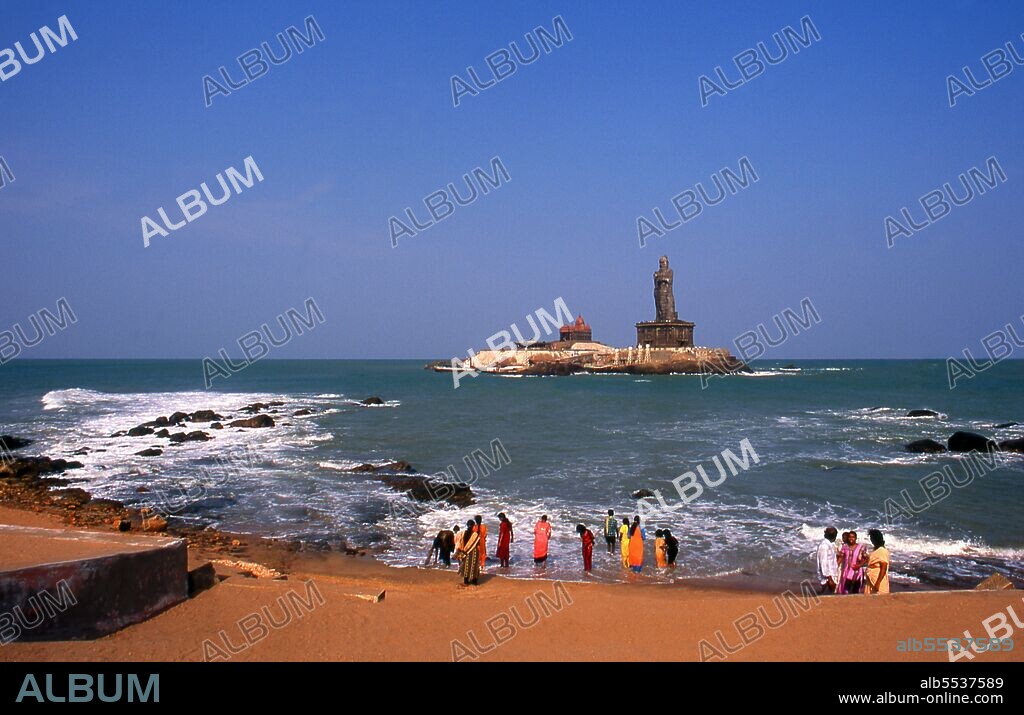alb5537589
India: Statue of the Tamil poet and saint, Thiruvalluvar, and the Vivekananda Rock Memorial (left), Kanyakumari, Tamil Nadu

|
Añadir a otro lightbox |
|
Añadir a otro lightbox |



¿Ya tienes cuenta? Iniciar sesión
¿No tienes cuenta? Regístrate
Compra esta imagen.
Selecciona el uso:

Título:
India: Statue of the Tamil poet and saint, Thiruvalluvar, and the Vivekananda Rock Memorial (left), Kanyakumari, Tamil Nadu
Descripción:
Ver traducción automática
Thiruvalluvar was a Tamil poet and philosopher born in Kanyakumari sometime between the 1st century BCE and the 8th century CE. His contribution to Tamil literature is the Thirukkural, a work on ethics. Swami Vivekananda (1863 – 1902), born Narendra Nath Datta, was an Indian Hindu monk and chief disciple of the 19th-century saint Ramakrishna. He was a key figure in the introduction of the Indian philosophies of Vedanta and Yoga to the Western world and is credited with raising interfaith awareness, bringing Hinduism to the status of a major world religion during the late 19th century. Kanyakumari, formerly known as Cape Comorin, lies at the southernmost point of mainland India. It is the southern tip of the Cardamom Hills, an extension of the Western Ghats which range along the west coast of India. Kanyakumari takes its name from the goddess Devi Kanya Kumari, considered to be a sister of Krishna. Women pray to her for marriage. The goddess is believed to be the one who removes the rigidity of our mind. The temple here is a Shakti Peetha, one of the holiest shrines of the Mother goddess.
Crédito:
Album / Pictures From History/Universal Images Group
Autorizaciones:
Tamaño imagen:
5093 x 3293 px | 48.0 MB
Tamaño impresión:
43.1 x 27.9 cm | 17.0 x 11.0 in (300 dpi)
 Pinterest
Pinterest Twitter
Twitter Facebook
Facebook Copiar enlace
Copiar enlace Email
Email
